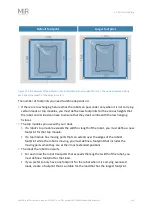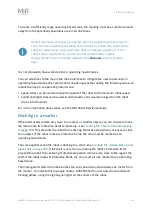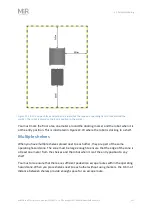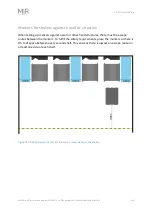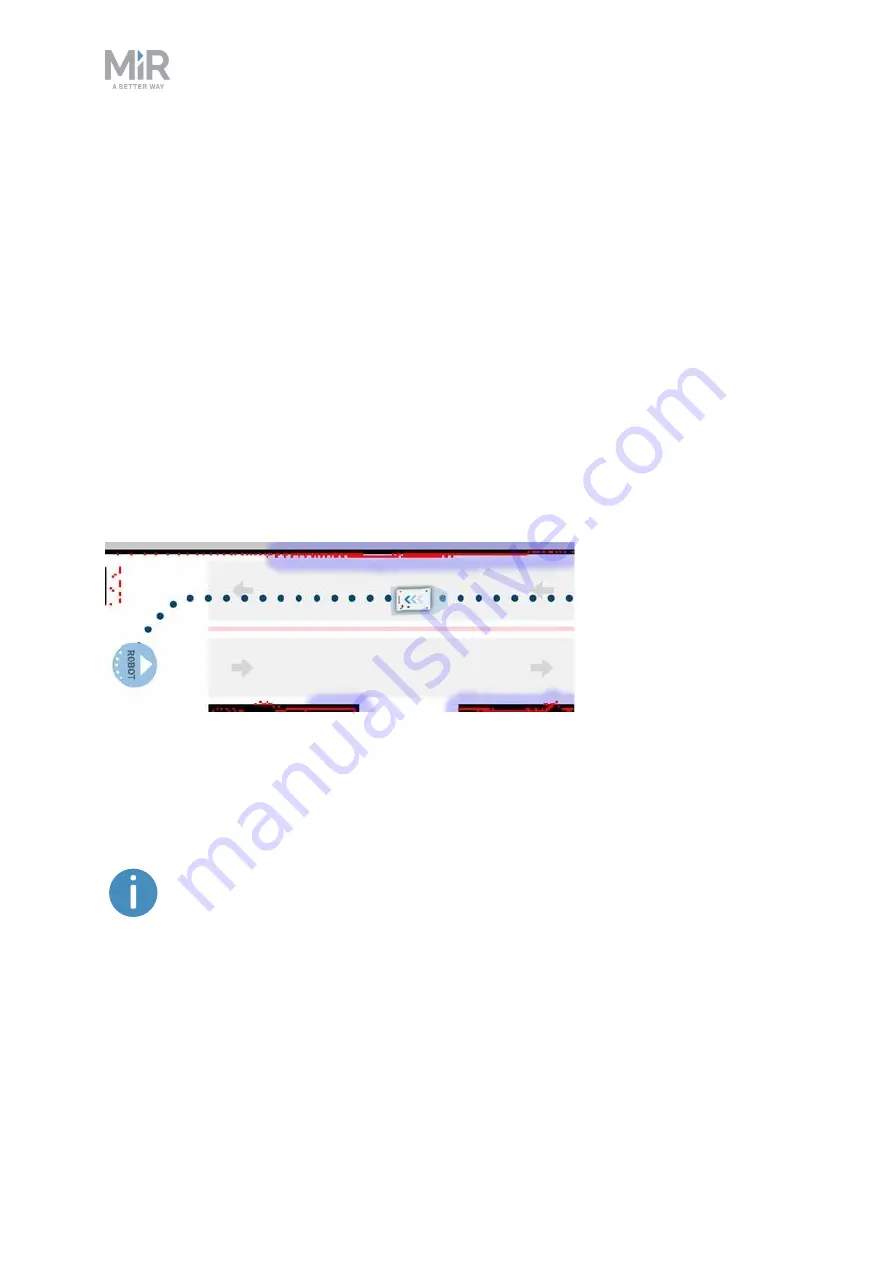
11. Commissioning
MiR250 Shelf Carrier User Guide (en) 03/2021 - v.1.4 ©Copyright 2021: Mobile Industrial Robots A/S.
134
Directional lanes
Issue:
In some areas, such as long corridors, robots driving towards each other may have a
hard time passing each other efficiently.
Solution:
If there is not enough space for the two robots to pass each other, you can create
a two-way lane using Directional zones in combination with Forbidden or Unpreferred zones.
•
Create a thin Forbidden zone (red) in the middle of the corridor parallel to the corridor
walls. This is the lane separator.
•
Create Directional zones (gray with arrows) on both sides of the Forbidden zone. Make
the directions of the zones opposite.
With such a configuration, robots going in the opposite directions use different lanes and do
not get in each others' way. Replacing the Forbidden zone with an Unpreferred zone gives
robots more space for maneuvers, for example, if a robot needs to cross the lane separator
to drive around an obstacle.
Figure 11.9. The robot drives down a two-way lane. The two Directional zone lanes are separated by a
Forbidden zone.
If there isn't enough space for robots to pass each other, you can use a Limit-robots zone to
specify that only one robot may drive down the corridor at a time.
To use Limit-robots zones, your robots must be connected to MiR Fleet.
























